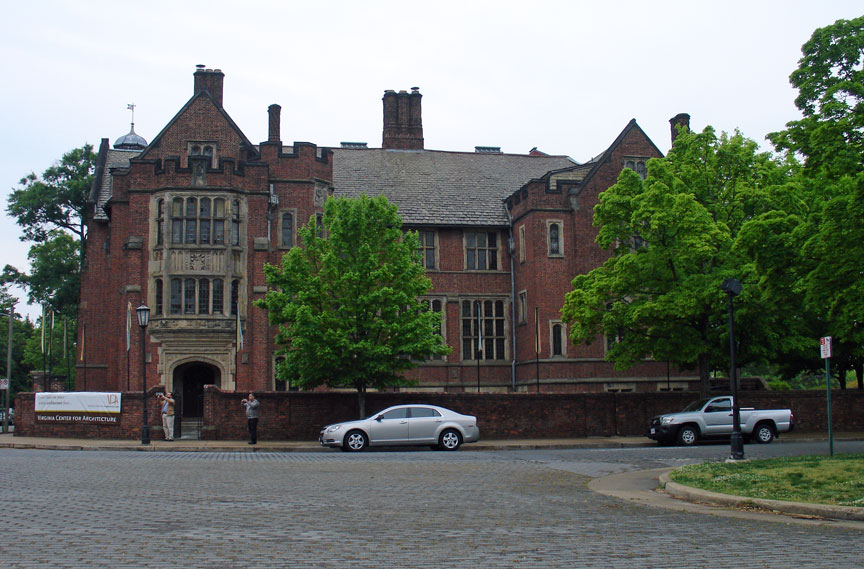

Monument Avenue
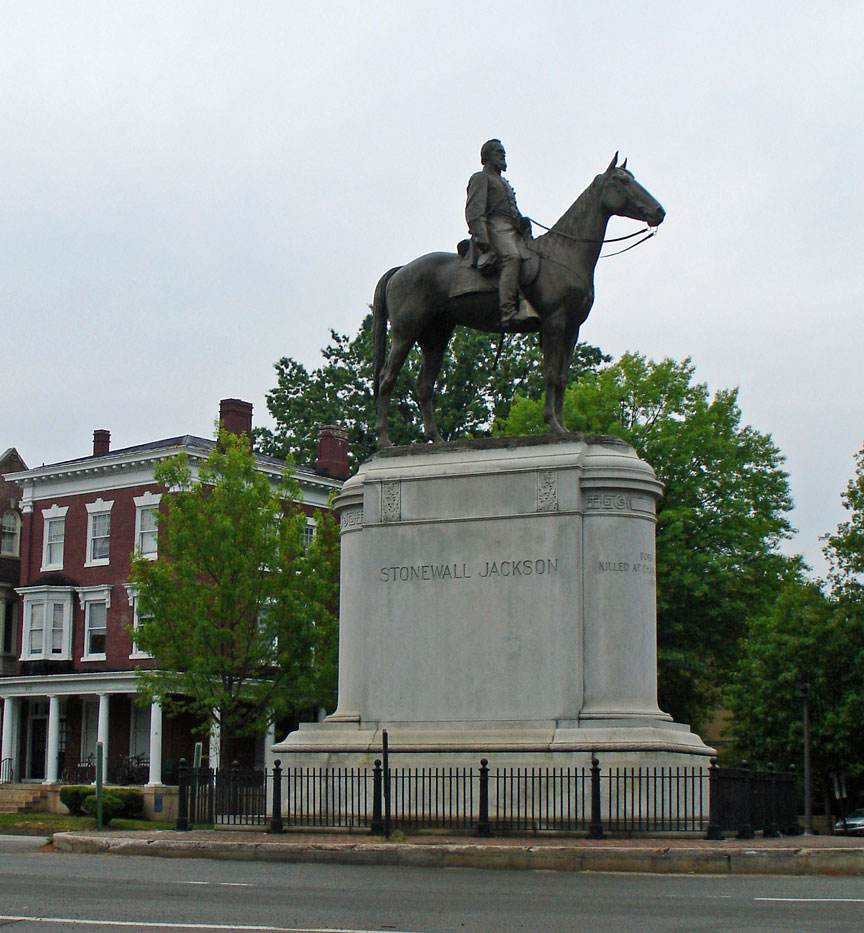
Stonewall Jackson – equestrian sculpture by Frederick William Sievers; unveiled October 11, 1919
Monument Avenue, in Richmond, Virginia, memorializes Virginian native Confederate participants of the Civil War as well as Arthur Ashe, an international tennis star and Richmond native. "Monument Avenue Historic District" is listed on the National Register of Historic Places. On May 29, 1890, crowds were estimated at 100,000 to view the unveiling of the first monument, to Robert E. Lee.

Monument Avenue is the site of several annual events, particularly in the
spring, including the Ukrop's Monument Avenue 10K race. At various times (such
as Robert E. Lee's birthday and Confederate History Month) the Sons of
Confederate Veterans gather along Monument Avenue in period military costumes.
Monument Avenue is also the site of "Easter on Parade," another spring tradition
during which many Richmonders stroll the avenue wearing Easter bonnets and other
finery or silly outfits.
In 2007, the American Planning Association named Monument Avenue one of the 10
Great Streets in the country. The APA said Monument Avenue was selected for its
historic architecture, urban form, quality residential and religious
architecture, diversity of land uses, public art and integration of multiple
modes of transportation.
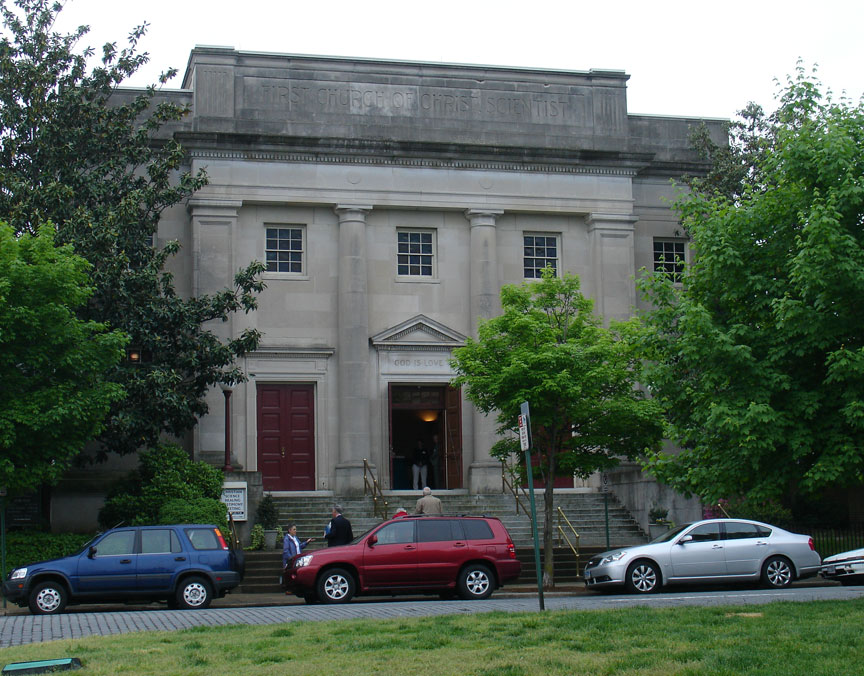
First Church of Christ Scientist
* Robert E. Lee – equestrian sculpture by Antonin Mercié; unveiled May 29, 1890
* J.E.B. Stuart – equestrian sculpture by Frederick Moynihan; unveiled May 30,
1907
* Jefferson Davis, President of the Confederate States of America – sculpted by
Edward Valentine; unveiled June 3, 1907
* Stonewall Jackson – equestrian sculpture by Frederick William Sievers;
unveiled October 11, 1919
* Matthew Fontaine Maury, oceanographer – sculpted by Frederick William Sievers;
unveiled November 11, 1929
* Arthur Ashe, tennis player – sculpted by Paul Di Pasquale; unveiled July 10,
1996
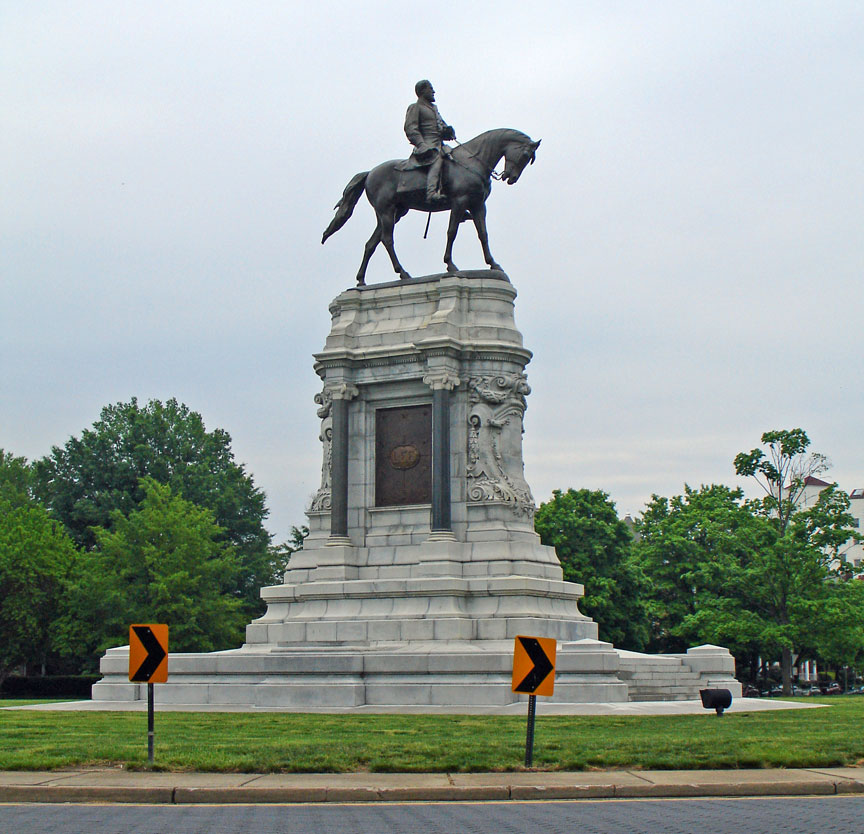
Robert E. Lee – equestrian sculpture by Antonin Mercié; unveiled May 29, 1890
The Lee Monument was the first and is the largest of the street's monuments. In 1876 the Lee Monument Association commissioned the adaption of a painting done by artist Adalbert Volck into a lithograph. The lithograph, depicting Lee on his horse was the basis for the bronze statue created by French sculptor Antonin Mercié. (The horse was not Lee's favorite wartime horse, Traveller, as some believe.) The cornerstone was placed on October 27, 1887. The statue was cast in several pieces separately and then the assembled statue was displayed in Paris before it was shipped to Richmond, where it finally arrived by rail on May 4. Newspaper accounts indicate that 10,000 people helped pull four wagons with the pieces of the monument. The completed statue was unveiled on May 29, 1890. The statue serves as a traffic circle at the intersection of Monument Avenue and Allen Avenue (named after Otway Allen, the developer who donated the land to the association). Lee stands 14 feet (4.3 m) high atop his horse and the entire statue is 60 feet (18 m) tall standing on a stone base.
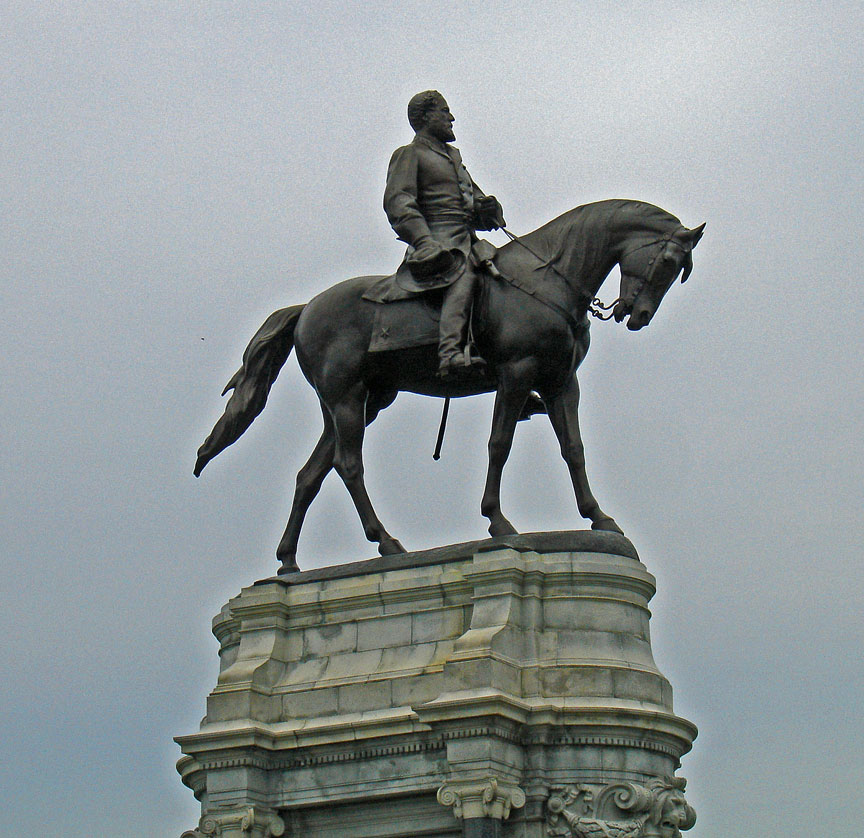
The site for the statue was originally offered in 1886. Over some opposition,
the offer was accepted and later withdrawn when opponents complained that the
$20,000 for the Lee Monument was inappropriate because the site was outside the
city limits. Richmond City annexed the land in 1892, but bad times economically
caused the Lee Monument to stand alone for several years in the middle of a
tobacco field before development resumed in the early 1900s.
The Lee Monument is a focal point for Richmond. (Most popular online maps depict
the "Lee Circle" as the center of Richmond, although the Virginia Department of
Transportation uses the state capitol building as its center.) In 1992, the iron
fence around the monument was removed, in part because drivers unfamiliar with
traffic circles would run into the fence from time to time and force costly
repairs.[citation needed] When the fences came down, the stone base became a
popular sunbathing spot.[citation needed] In December, 2006, the state completed
an extensive cleaning and repair of the monument.
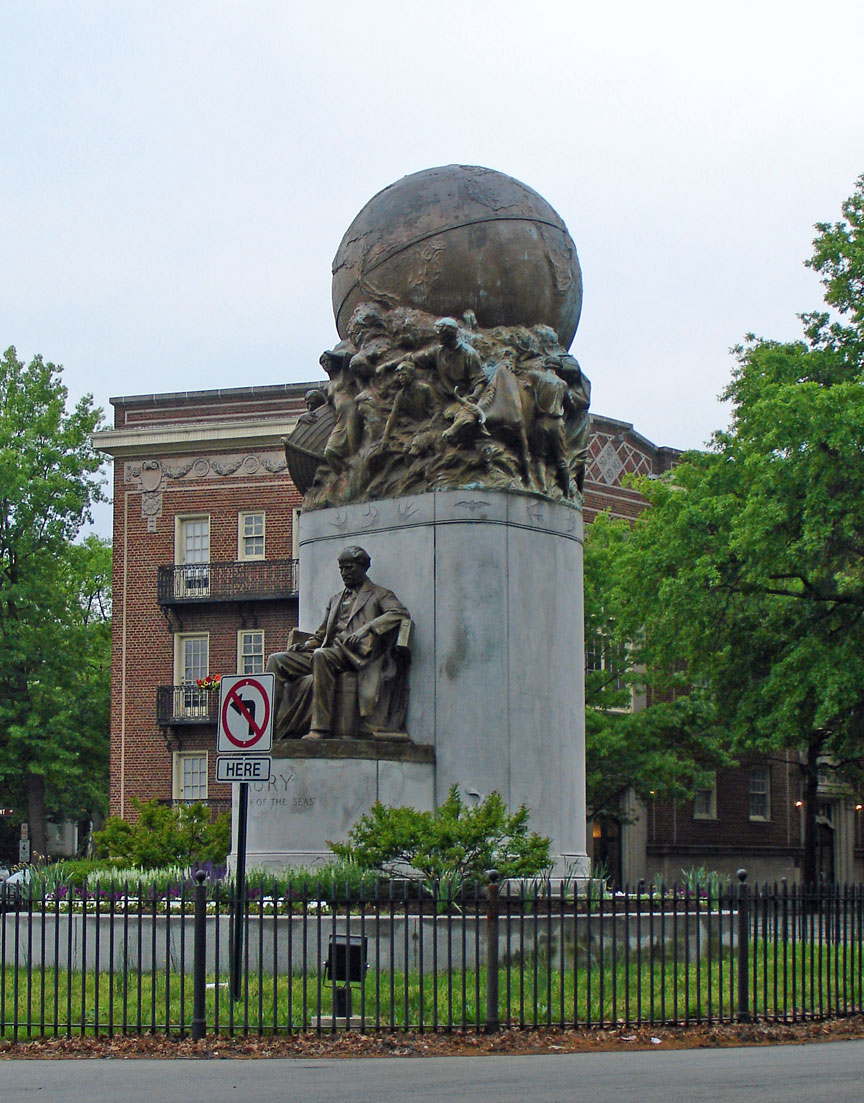
Matthew Fontaine Maury, oceanographer – sculpted by Frederick William Sievers; unveiled November 11, 1929
The "Pathfinder of the Seas" monument of Matthew Fontaine Maury is located on Monument Avenue at Belmont Avenue, closest to the Arthur Ashe monument. The Maury monument is not a Confederate war monument per se, demonstrating little indication of his role in the Confederate war, which included serving as Chief of Sea Coast, River and Harbor Defences and acquiring ships and supplies for the Confederacy through his work in the Confederate Secret Service in Europe, mainly in Ireland, France, and England. When the Sons of Confederate Veterans celebrate Confederate History Month or Lee-Jackson Day by parading in period military costumes from east to west on Monument Avenue, they make a turn before they get to the Maury monument, a further indication that Commander Matthew Fontaine Maury's monument is not a Civil War monument. Most of the Confederate veterans were gone when Monument Avenue turned to the sciences with the 1929 statue to Maury.
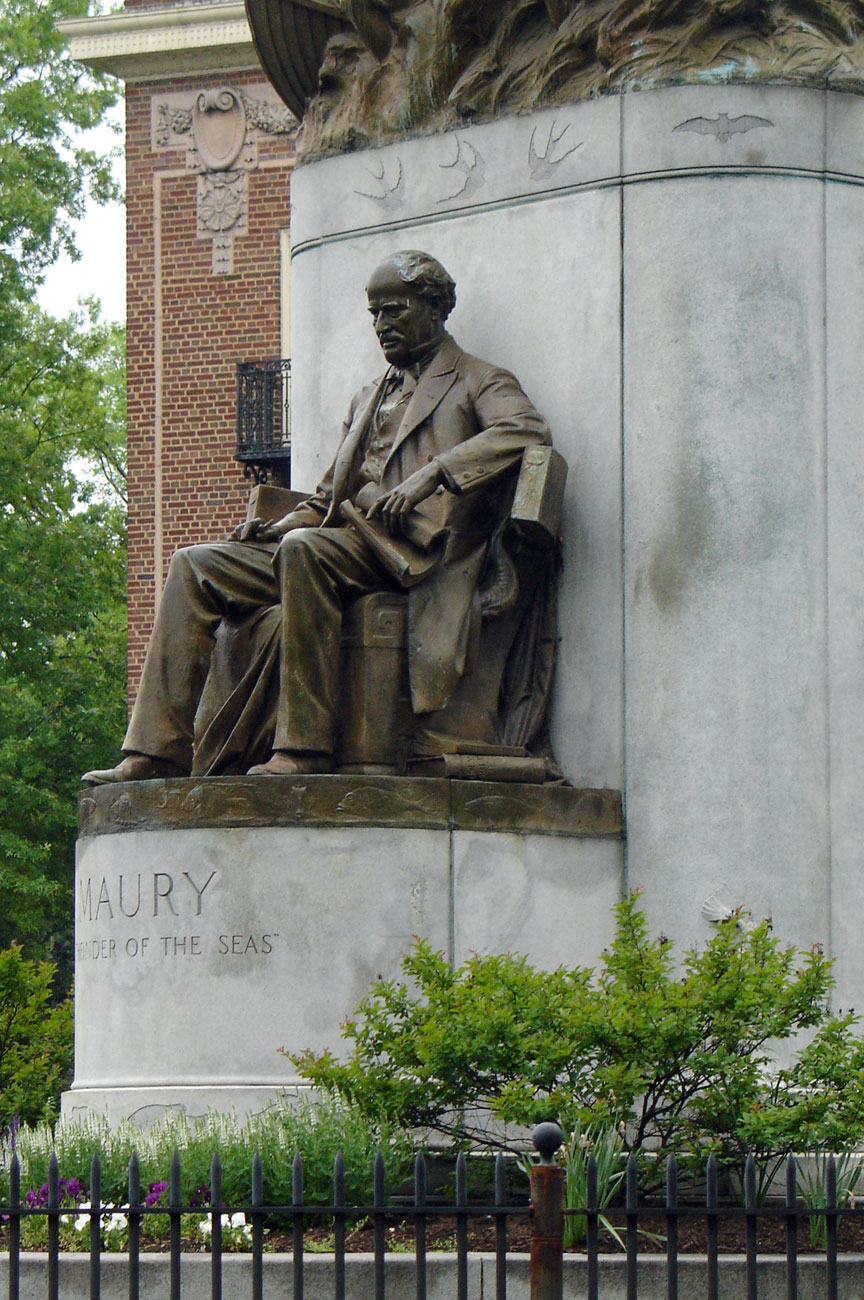
The figure of Maury faces eastward, toward the Atlantic Ocean that the
"Pathfinder of the Seas" charted. He holds in his left hand a pencil and compass
and in his right hand a copy of his charts. Beside his left foot is his book,
Physical Geography of the Sea, as well as a Bible, indicating the central role
that faith played in Maury's life. A globe of the Earth is tilted slightly on
its axis behind his head. It represents both land and sea and the lady standing
calmly is a representation of "mother nature" between the land and the sea.
Around the base of the globe are depictions of people clinging to a sinking boat
in bad weather representing the dangers of the sea with a woman in the center
and on the right (north) side of the globe there is a farmer, boy, and a dog
representing Maury's work promoting land weather service which dates back
further than 1853. Maury attended the International Meteorological Organization
in Brussels, Belgium on August 23, 1853 where Maury, leading the way for this
conference with his ideas of land and sea weather predictions, and representing
the United States, promoted his ideas of safety on both land and at sea to many
nations which agreed to follow his ideas. Every maritime nation had its ships
reporting to Maury at the National (later Naval) Observatory in Washington D.C.
These elements represent Maury's work with atmospheric science, to the benefit
of all mankind and their enterprises on land and on the sea. Weather warnings
and reports had been dreams of Maury during his lifetime up until when he died
and he was successful in his work. He thought of the ships at sea as "a thousand
temples of science for all of humanity" and believed these brought men and
nations closer together in a common self-protection against storms and deaths.
There are fish, dolphins, jellyfish, and birds around the monument's perimeter.r.
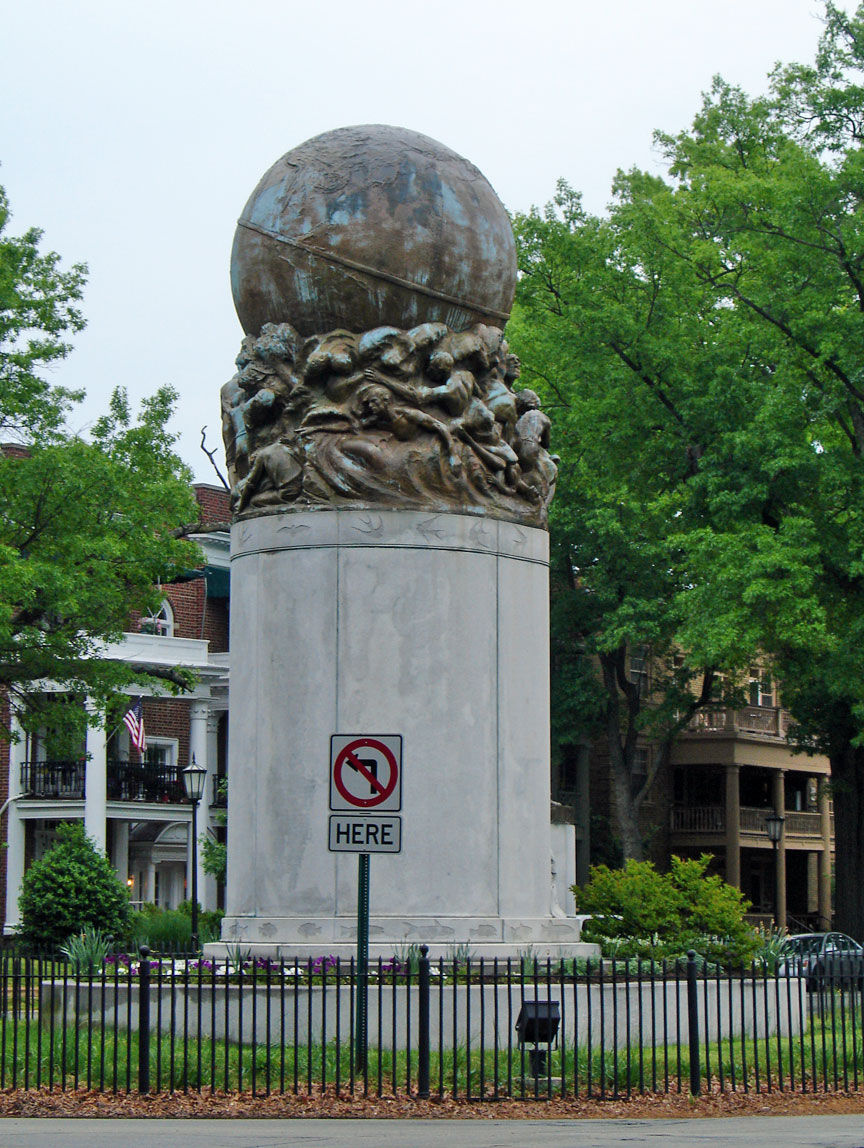
This statue was originally to have been placed in Washington, D.C., but was
rejected because Commodore Maury, along with many other military leaders from
Virginia, abandoned their careers with the Union military to support their
country (home state) in the Confederacy. The monument was placed in Richmond
instead of "Washington City" as it was called in his time.
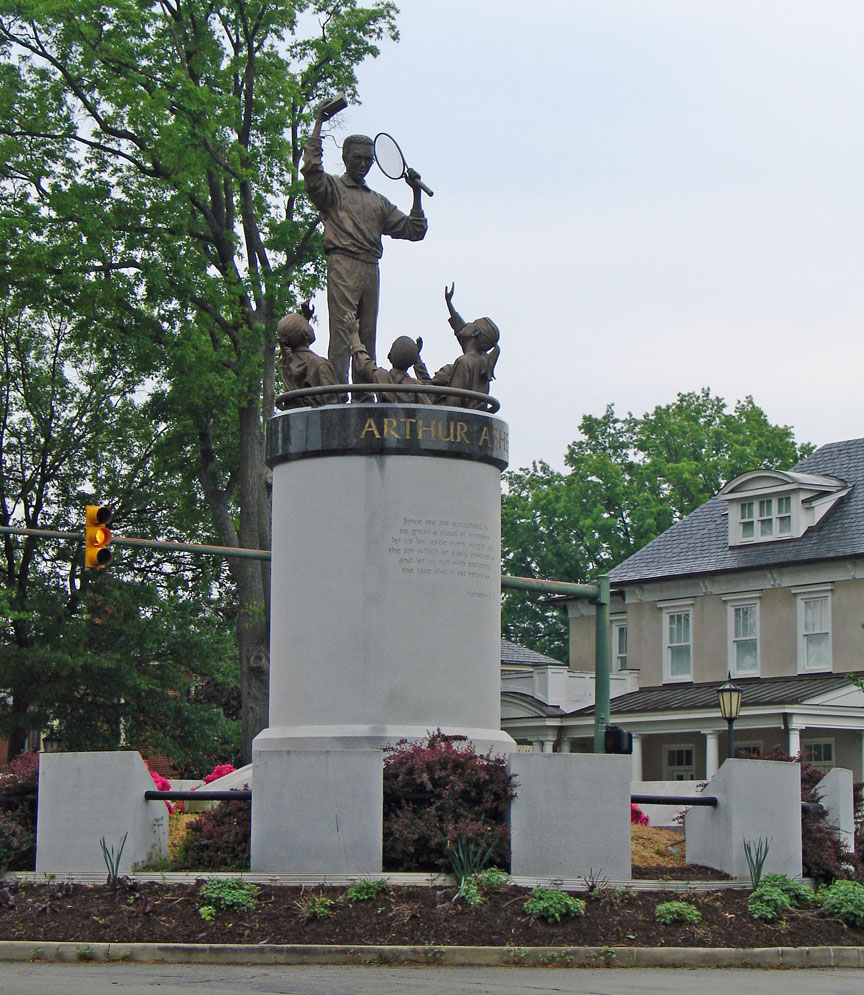
Arthur Ashe, tennis player –
sculpted by Paul Di Pasquale; unveiled July 10,
1996
Sculptor Paul DiPasquale of Richmond, met Arthur Ashe in 1992. He later wrote
the world champion and sought permission to create an authorized, biographical
statue. If approved upon completion, the artist planned to seek funding to cast
it into bronze. The sculptor asked Mr. Ashe for his input regarding the
monument’s presentation and message. Mr. Ashe called DiPasquale in early 1993
with his authorization and agreement to participate and to describe his
preference on his likeness, clothes, demeanor, age, and other subjects.
Arthur Ashe died after giving his authorization and description of the statue,
and before approval of the sculpture. His wife Jeanne Moutoussamy Ashe followed
up on the project. She loaned the sculptor photographs and clothing of Mr. Ashe,
she approved drawings and the full scale 12-foot (3.7 m) high model, and she
directed DiPasquale to the mentoring non profit organization, Virginia Heroes
Incorporated for possible fund raising. Ashe's mother, Lorene Ashe, his Aunt,
Dorothy Cunningham and his brother, Captain Johnnie Ashe as well as other family
members also approved the sculpture within the year following Ashe's death.
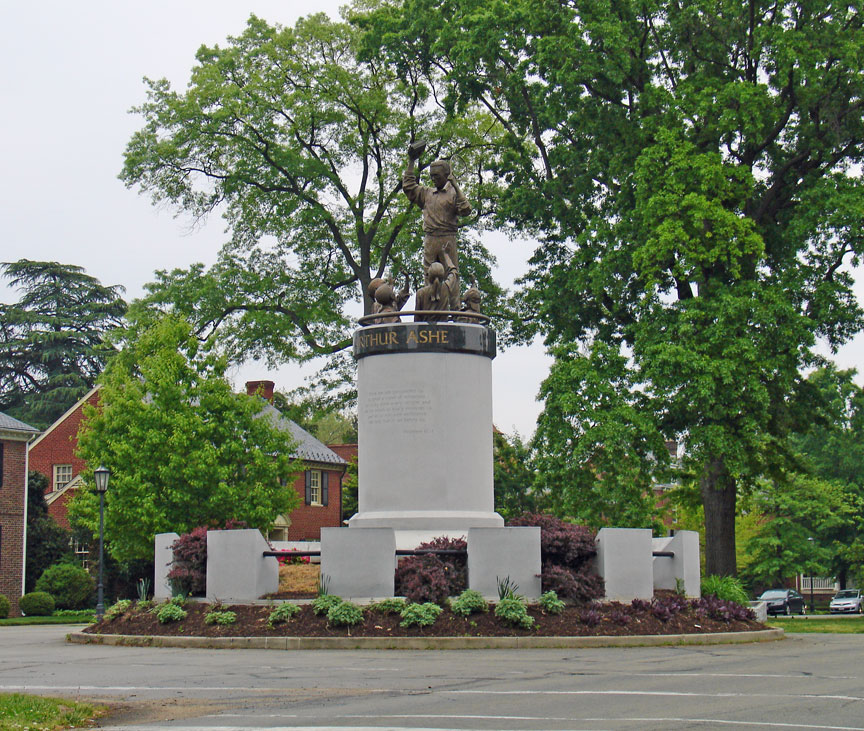
Mrs. Marty Dummett President of Virginia Heroes and their Board Directors voted
in December 1993 to fund raise the $400,000 to complete the bronze and granite
fabrication and installation of the 24-foot (7.3 m) high monument. Mrs. Dummett
became Executive Director of the project and later, Thomas Chewning, President
of Dominion Resources, with Senator Benjamin Lambert became fund raising
co-chairmen.
The Project was presented to Richmond's city council appointed Arthur Ashe
Memorial Committee in February 1994 with unanimous approval. The project then
moved several times through the following city councils, committees and
commissions over the following year and a half: City Council under Mayor Kinney,
City council under Mayor Young, Urban Design Committee, City Planning Commission
and the City Public Art Commission. Mayor Young appointed two council
representatives to the 12 member Site Selection Committee, chaired by Virginia
Hero Member, Leonard Lambert, Esquire. Ashe's cousin Randy Ashe served as the
family representative. Monument Avenue was the site selected. This site
selection was debated in a five hour internationally televised City Council
Public Hearing in July 1995. Monument Avenue was selected as a site with one
dissenting vote.
Installation was completed and the Monument unveiled at the rotary site at
Monument Avenue and Roseneath Road on Arthur Ashe's birthday, July 10, 1996.
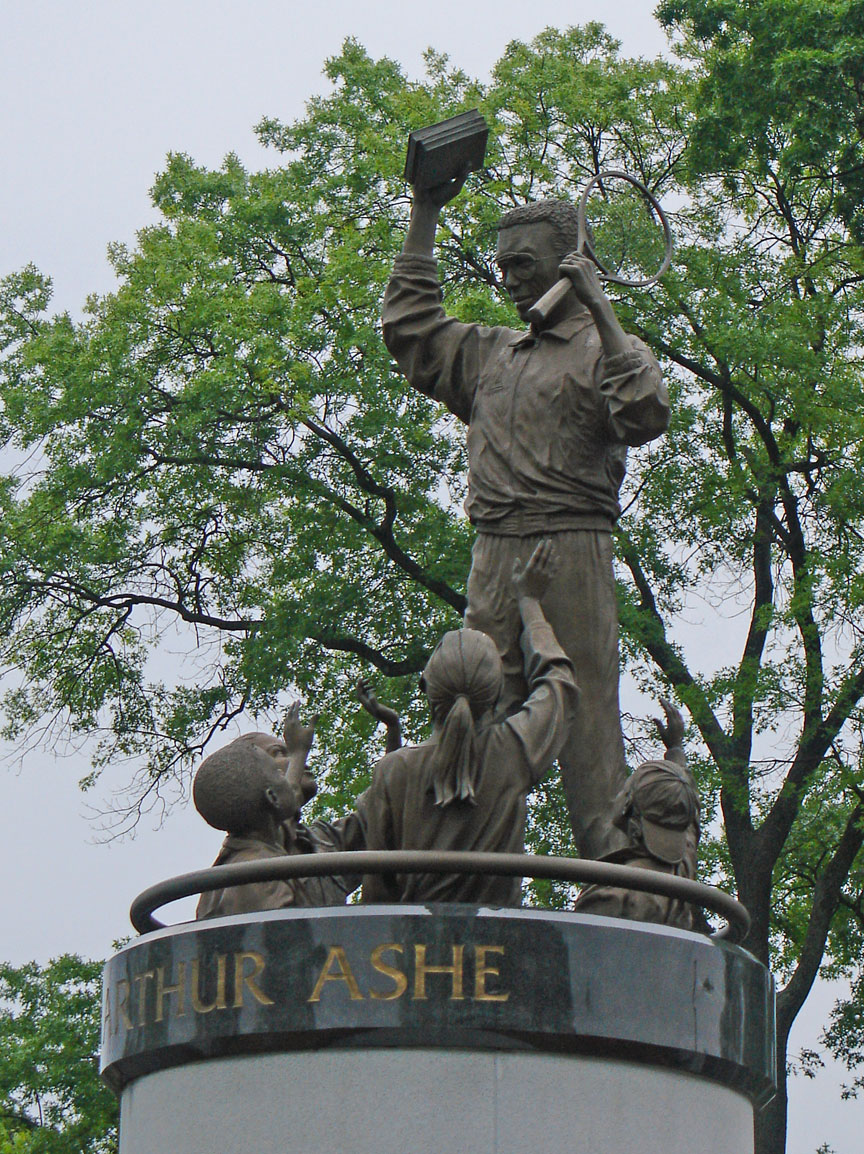
The Virginia Historical Society Ashe Model Presentation: This Museum at
Boulevard and Park Avenue in Richmond, requested and acquired the full scale
model from Virginia Heroes Incorporated in June 1996. It has been on permanent
display since 1998.
Controversial Public Art Localized: For almost two years prior to the unveiling,
controversy raged from varied sources including organized resistance by a local
gallery owner and art critic who had never seen the actual statue. The critic
was later let go from her newspaper. After the installation, the Art and
Architecture critic for the Washington Post, B. Forgey wrote of DiPasquale's
work, "placing this statue of Arthur Ashe on Richmond's Historic Monument Avenue
was one of the most important things to happen in Virginia in the entire 20th
century." Since its debut, the monument has been published in books nationally
and internationally and has generated one film and two Richmond PBS television
documentaries. It is the only statue on Monument Avenue that faces directly away
from downtown Richmond. Whether this was done for editorial or symbolic reasons
or is just a function of where the best site available was located is unknown.
The copy on the granite base is from the dedication in the front of Days of
Grace, Ashe’s last book:
Since we are surrounded by
so great a cloud of witnesses
let us lay aside every weight, and
the sin which so easily ensnares us
and let us run with endurance
the race that is set before us.
Hebrews 12:1
Text from Wikipedia
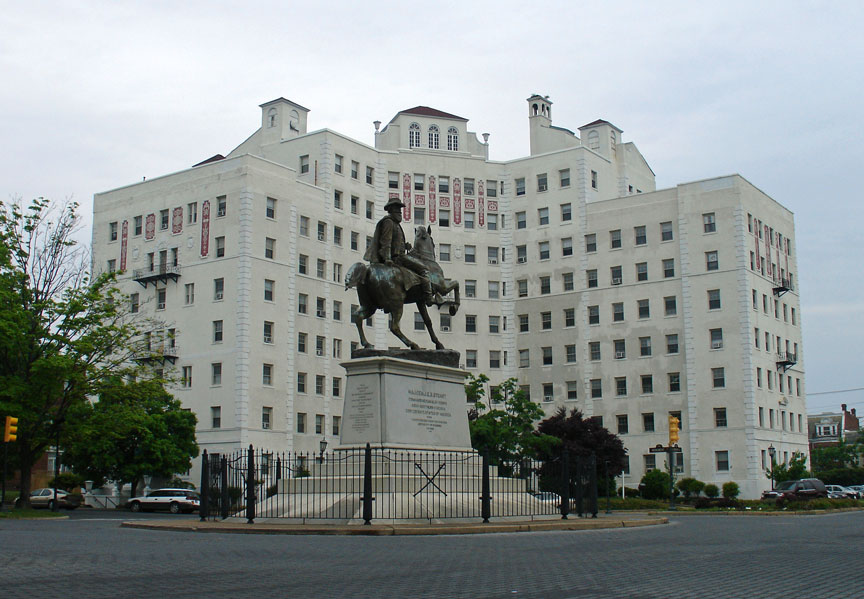
* J.E.B. Stuart – equestrian sculpture by Frederick Moynihan; unveiled May 30,
1907
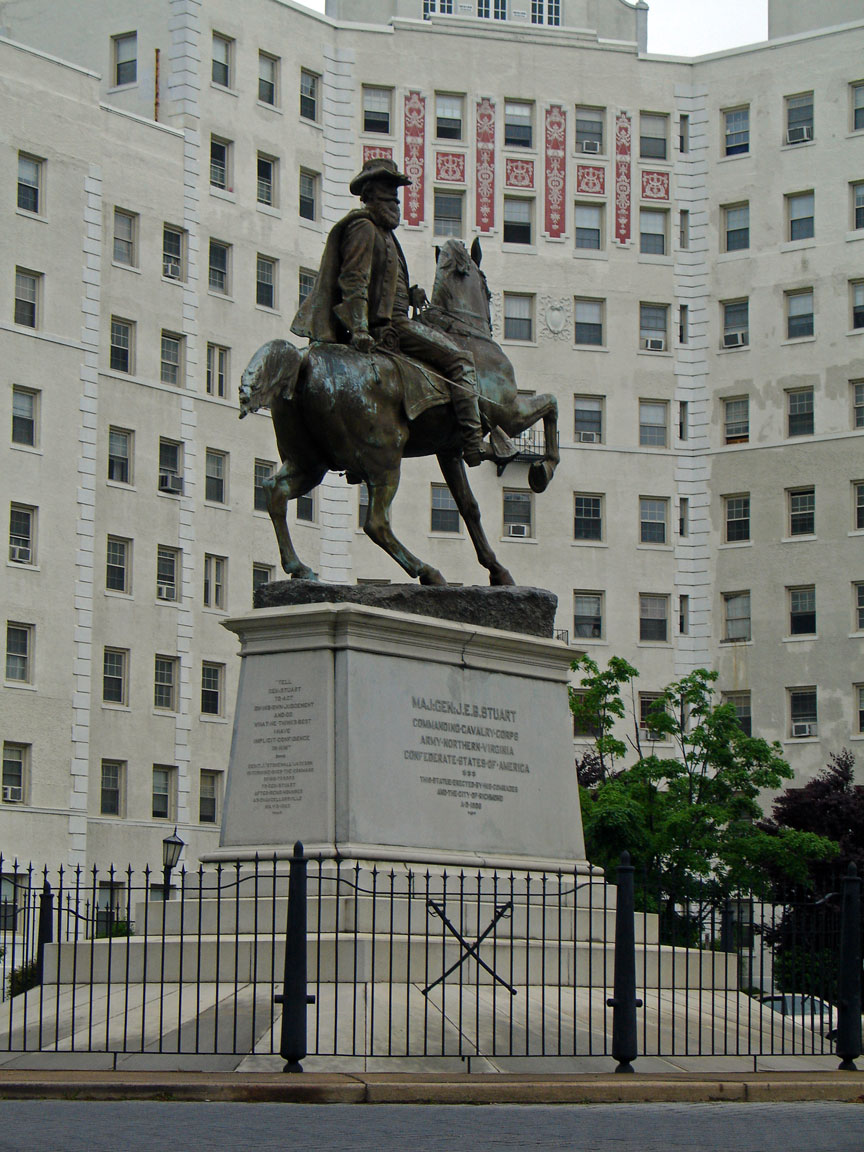
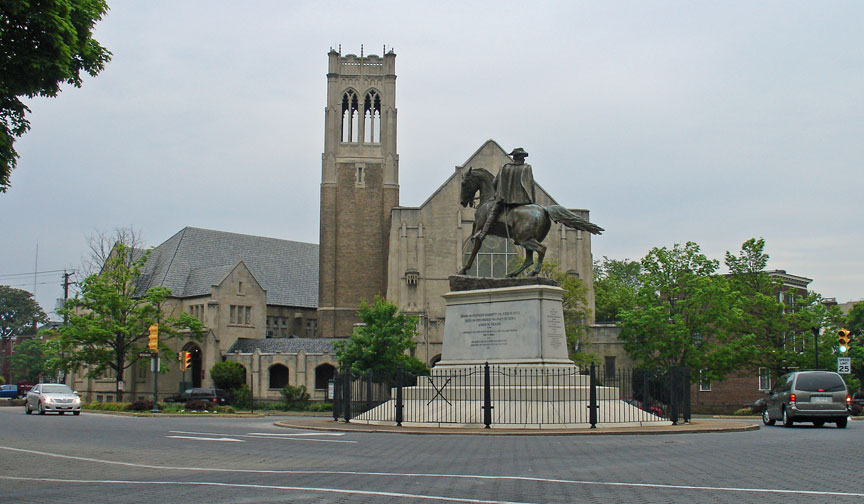
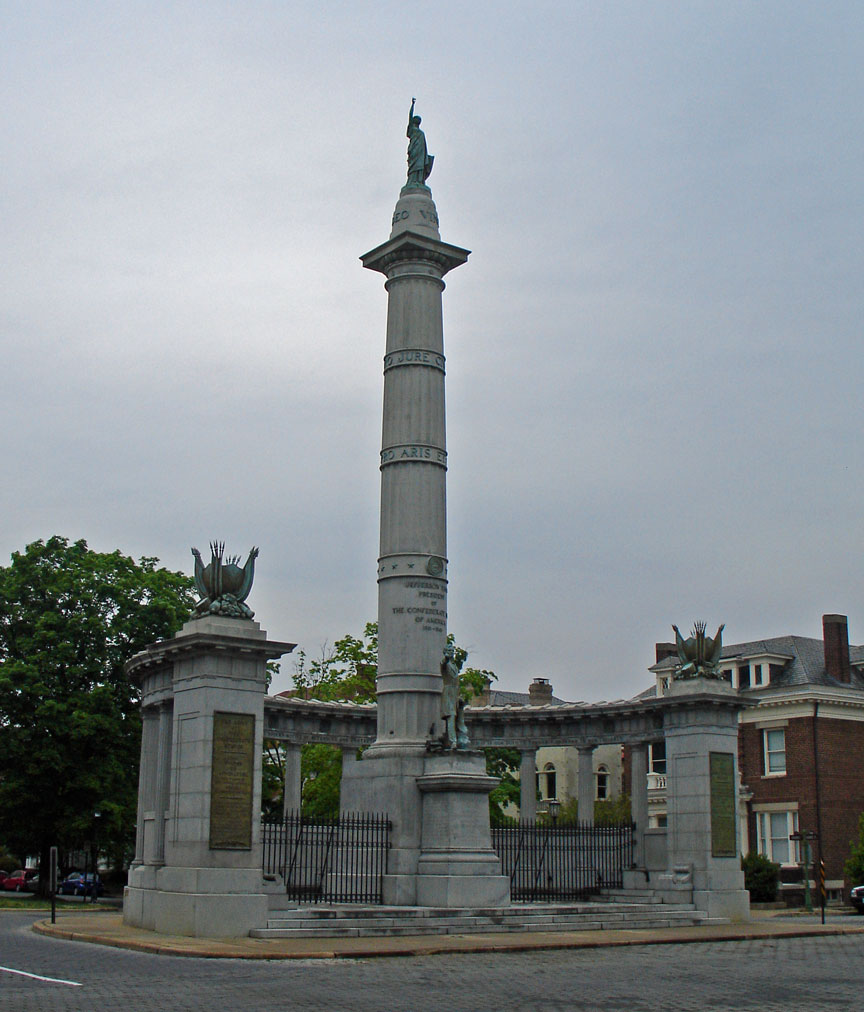
Jefferson Davis, President of the Confederate States of America – sculpted by Edward Valentine; unveiled June 3, 1907
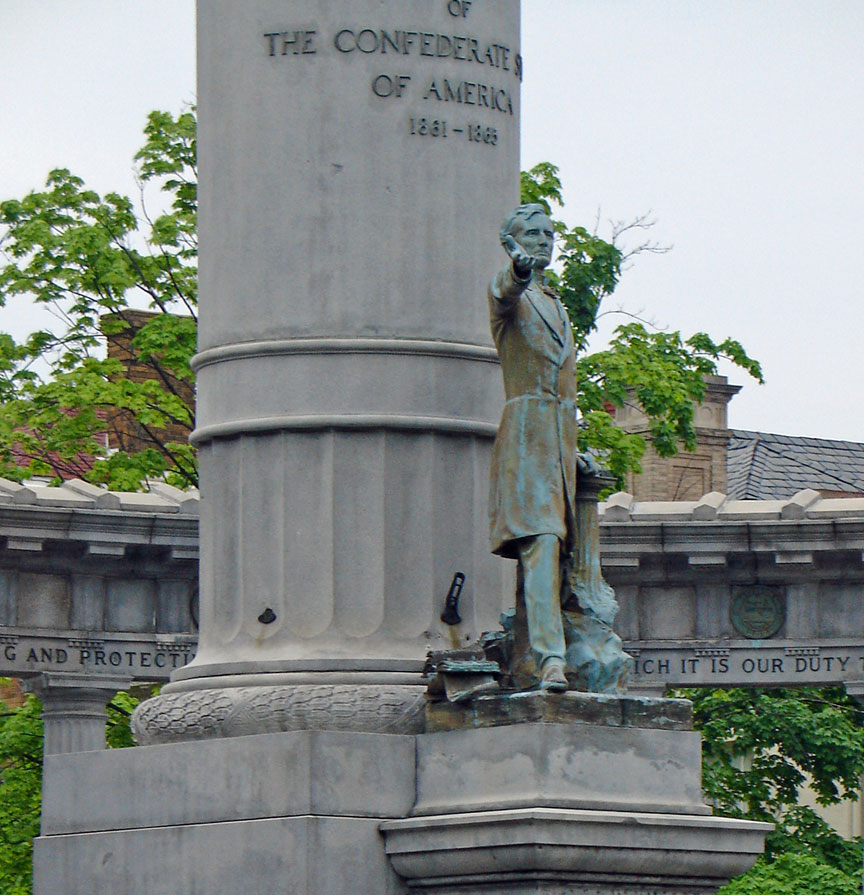
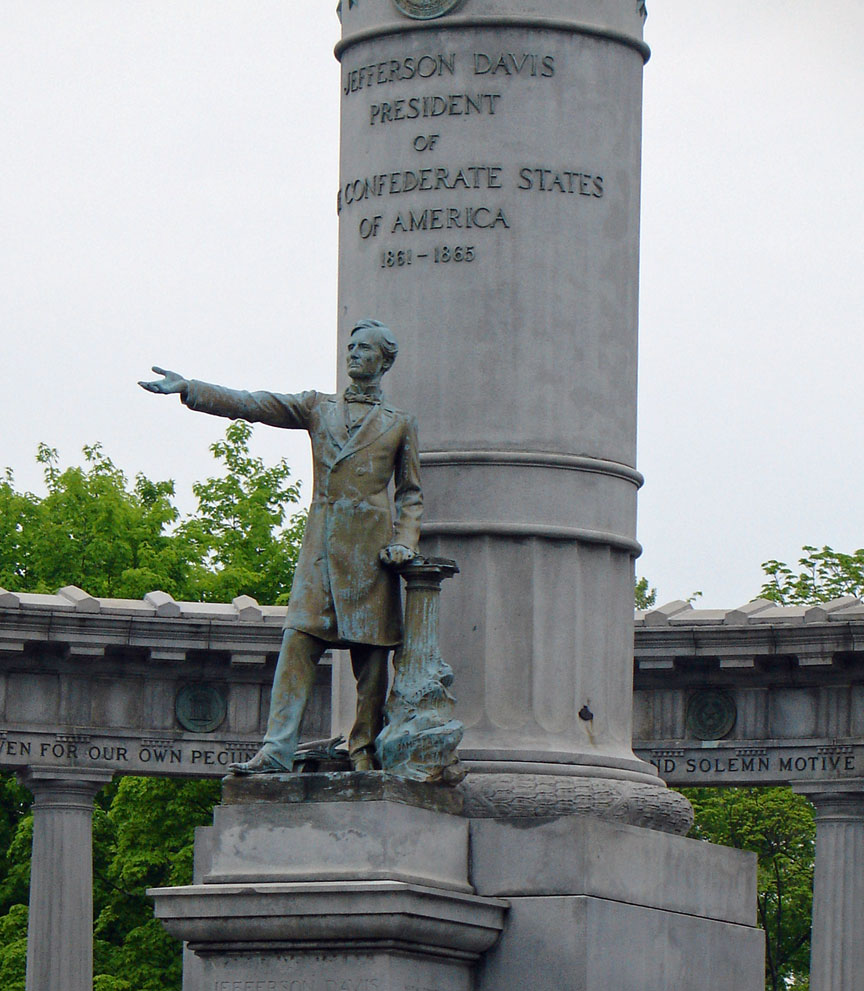
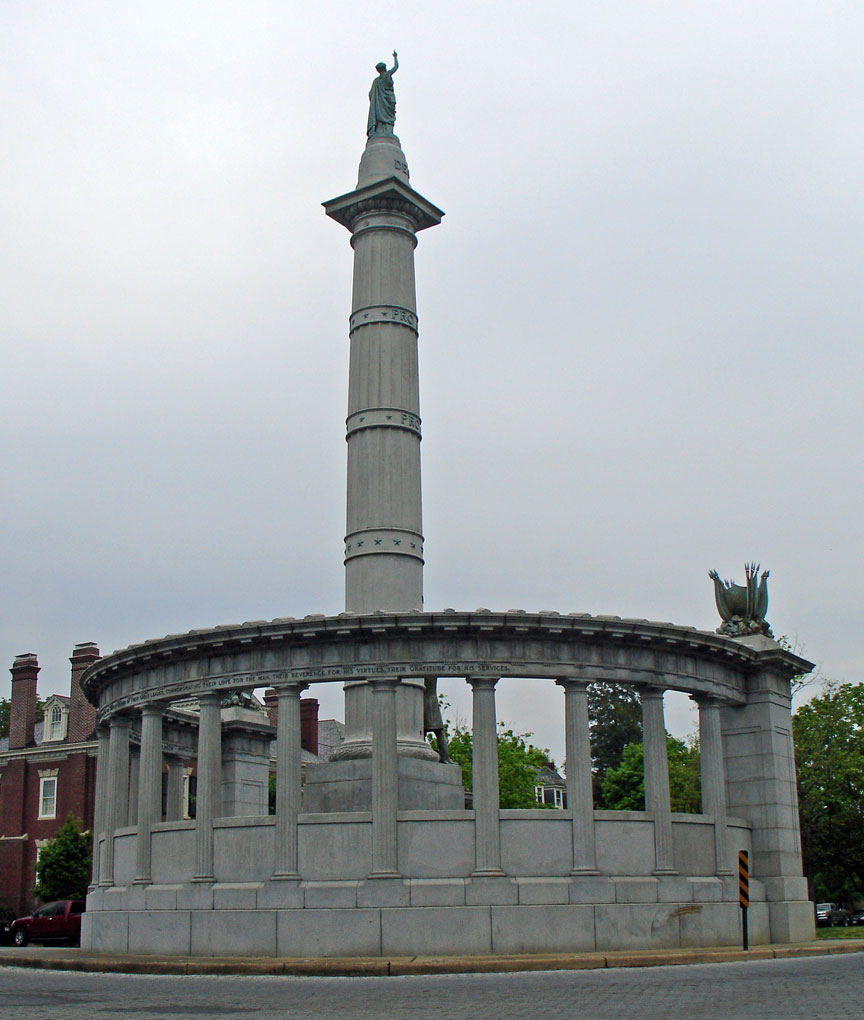
Along Monument Avenue
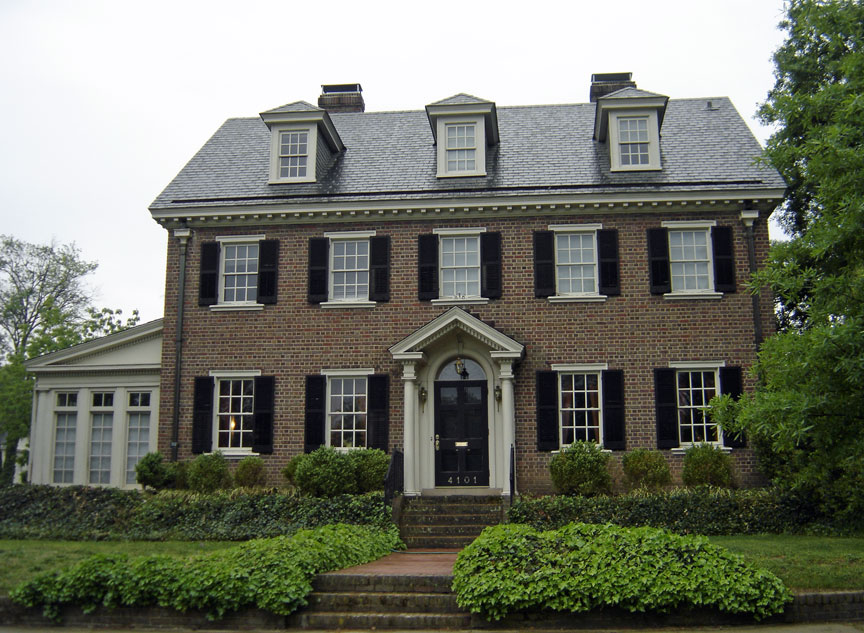
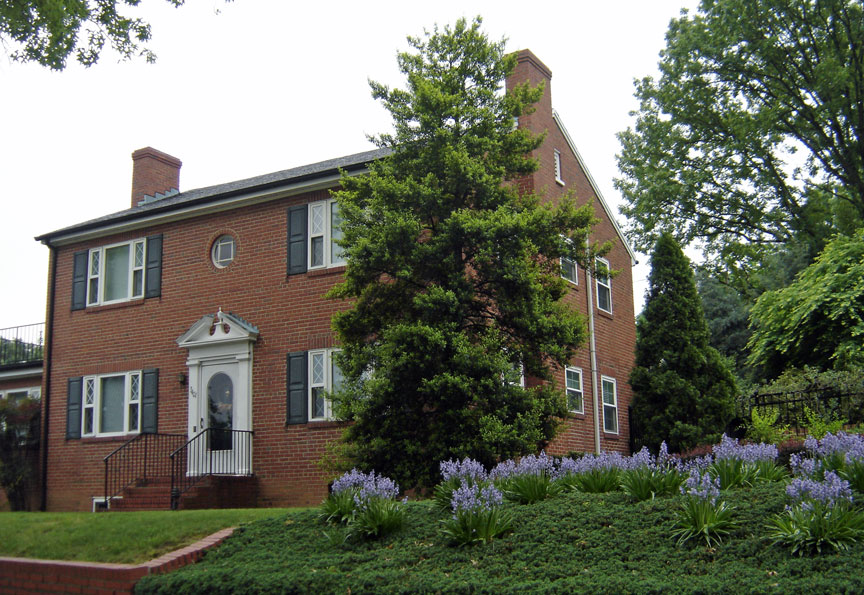
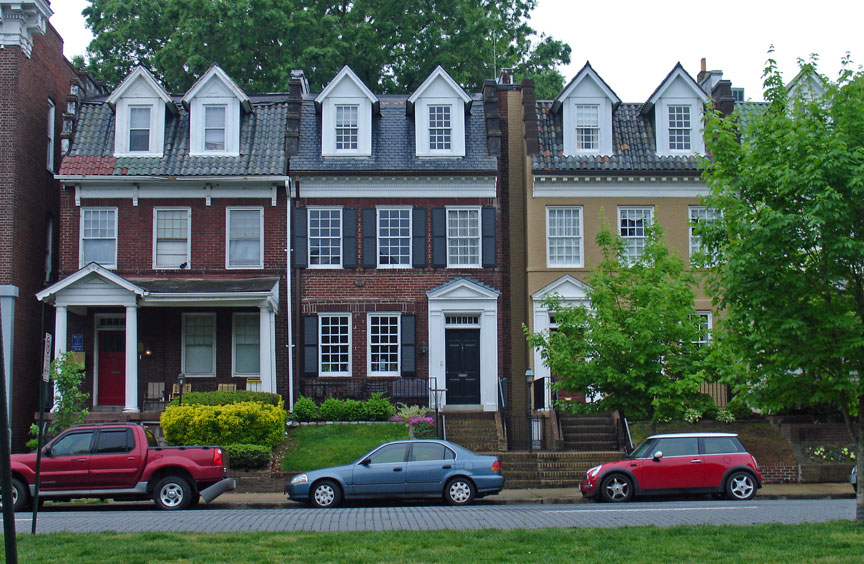

big houses
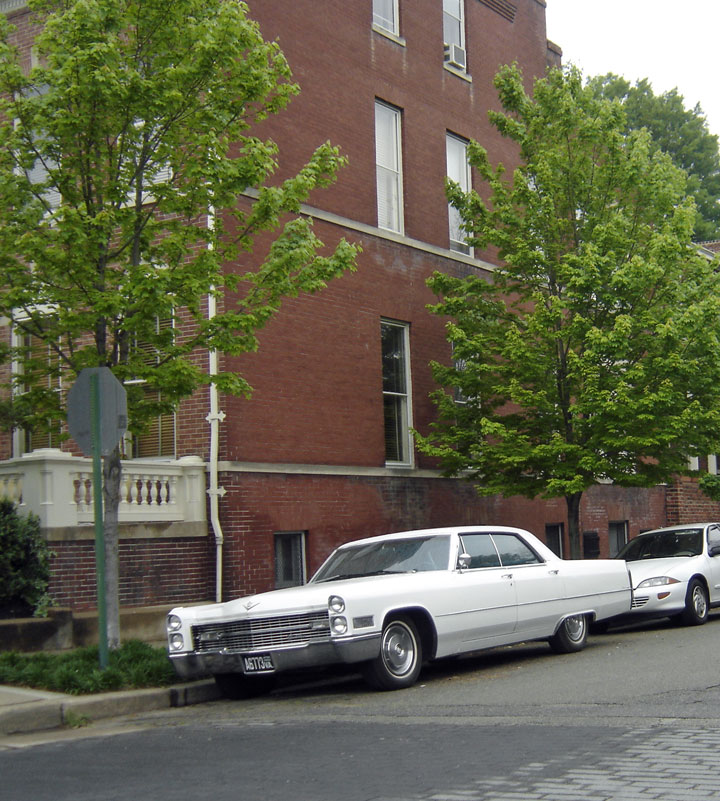
big cars
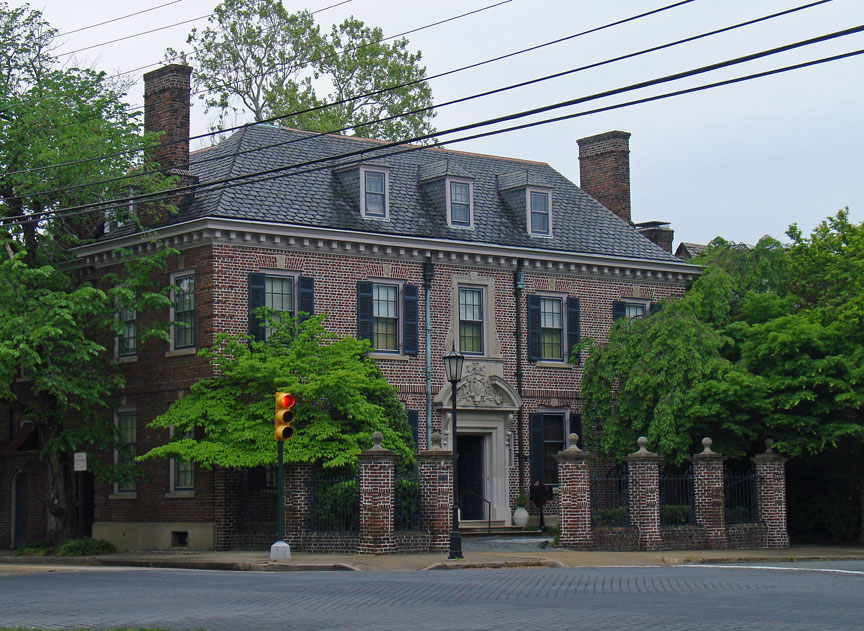
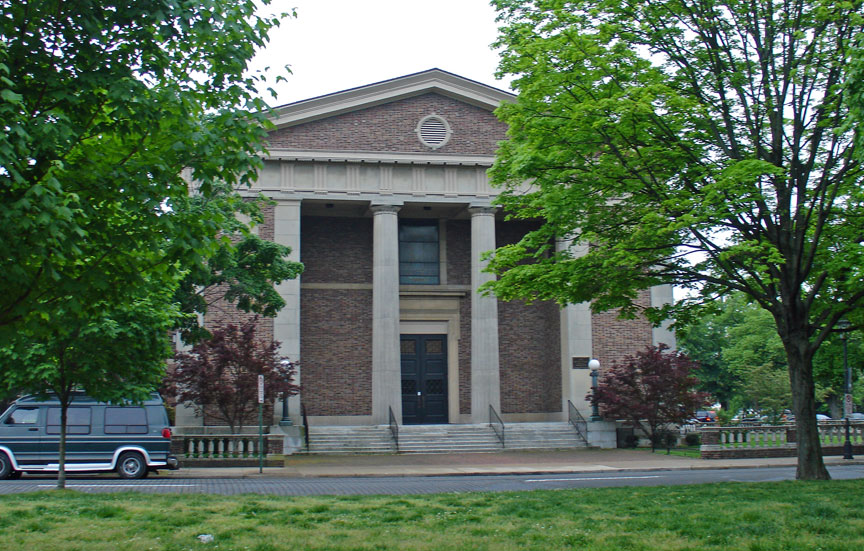
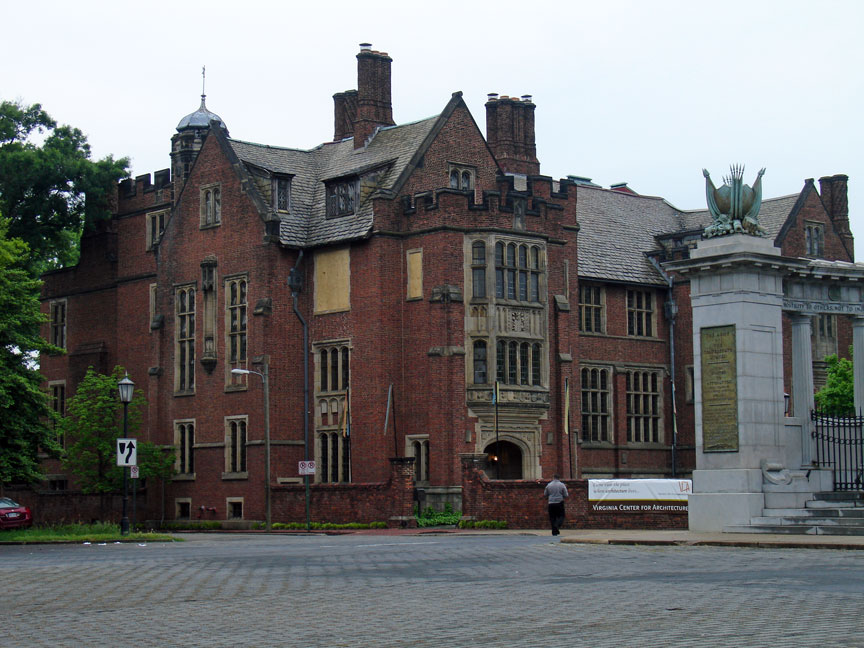
Virginia Center for Architecture
